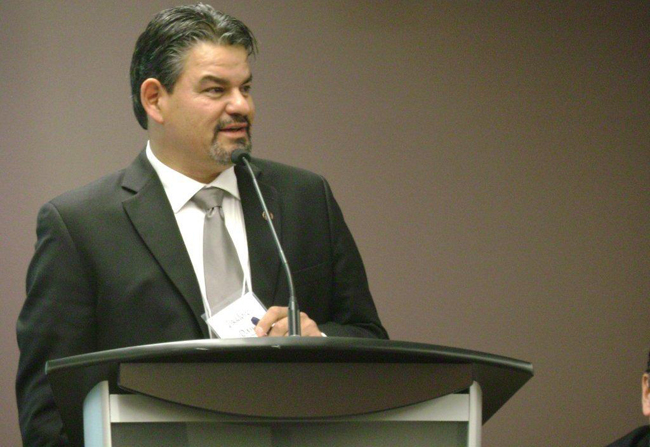Microfinance: A tool for nation-building

By Barbara Nahwegahbow
TORONTO – Chief Isadore Day of Serpent River First Nation doesn’t see Serpent River’s microfinance strategy as letting the federal government off the hook.
“We have to continue fighting the government to uphold their fiduciary obligation,” said Chief Day, “but we also have to lift our people up.” Put simply, he sees microfinance as an essential tool for nation-building.
Chief Day was in Toronto on Oct.5 for the Microfinance Summit that had a focus on First Nations. Joining Chief Day on the panel entitled Microfinance and Aboriginal Peoples and First Nations, were Betty Ann Lavalee, National Chief of the Congress of Aboriginal Peoples, and Stewart Anderson of Vancity.
Microfinance was developed about 40 years ago in developing countries. Jannalee Anderson, Vice President with Opportunity International Canada and conference speaker said the industry started by providing small loans to emerging entrepreneurs to start a business to support themselves. Microloans of $500 or less in countries like India can establish viable enterprises such as a barber service in a local market. Opportunity has been a leader in expanding microfinance to include the provision of other financial services such as savings accounts, insurance and training along with business loans to people living in poverty.
Explaining this year’s Aboriginal component, Jim Louttit, a member of Marten Falls First Nation, Vice-President and Co-Chair of the Summit said, “My thinking is let’s not forget where we live. We have the same issues that other countries have so let’s try to correct what we have here. Obviously, First Nations is a place to start.” Louttit acknowledged, however, Canada will pose more of a challenge. “In India, a $100 loan will take you a long way to set somebody up in business so they can support their family,” he said. “In Canada or the US, $100 or even $500 does not buy you very much so you do need to increase the capital and also look at people that maybe have some assets.”
“Microfinance,” said Chief Day, “is a possible solution to the poverty-based challenges that exist as a result of historical impacts.” Microfinance cannot be implemented in a vacuum, he said, and needs to address the challenges created by colonialism and its institutions and that include housing, health, financial literacy, education and even recreation.
Jim Louttit called Chief Day’s vision, “microfinance-plus where it’s not only an umbrella of financial services but there’s linkages to things like health, water, sanitation and literacy. Chief Day has the vision,” he said, “and people need to listen to that vision. All it takes is one or two to start, especially if you show some success.”
“On our side as leaders,” Chief Day continued, “we have to take a responsible approach to the issues and impacts that happen in our communities. It’s like the thief who comes and breaks into your house. And they leave a big mess. That thief isn’t going to come back and clean that up. It’s not our fault that it happened, but it is our responsibility to clean it up because nobody’s going do that for us. But in the meantime, we keep chasing down and holding that culprit [federal government] responsible and we can never let go of that.” Chief Day acknowledges implementing a microfinance strategy will be challenging but is committed to overcoming the barriers.

